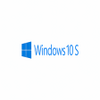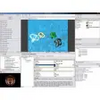Efficiently administer ActiveX controls
Efficiently administer ActiveX controls
Vote: (6 votes)
Program license: Trial version
Developer: 4developers
Version: 2.1
Works under: Windows
Vote:
Program license
(6 votes)
Trial version
Developer
Version
4developers
2.1
Works under:
Windows
Pros
- Streamlines registration and unregistration of COM controls
- Facilitates the removal of problematic COM controls from the System Registry
- Ability to compare control versions across remote computers
- Customizable post-registration behaviors
- Lightweight application that’s easy on system resources
Cons
- Limited compatibility with modern Windows systems
- No recent updates, raising concerns about future support
- May have a learning curve for users unfamiliar with COM and ActiveX
An In-Depth Review of COM Explorer
COM Explorer is a specialized utility designed for developers and system administrators who need to manage COM (Component Object Model) components and controls, a crucial aspect of Windows programming and system operations. This trial version software falls under the development category, with a focus on ActiveX components, specifically targeting tools and utilities for managing such controls.
Utility Features and Functionalities
One of the essential features of COM Explorer is its ability to allow users to register or unregister multiple COM controls with a single mouse click. This functionality is particularly useful when dealing with a batch of components and can save time and reduce the risk of errors that could potentially arise from manual registrations.
Furthermore, COM Explorer addresses the need for system maintenance by providing the possibility to swiftly remove misbehaved or problematic COM controls from the System Registry. This capability is essential in maintaining system stability and preventing conflicts that could impact the performance of applications that rely on COM components.
For those working in environments with multiple computers, COM Explorer offers the valuable feature of comparing COM control versions across different remote machines. This aids in ensuring consistency across a network, which is vital for collaborative projects or when maintaining a homogeneous development or production environment.
The software also empowers users to specify how it should behave after a control is registered, granting them greater control over their system configurations and the behavior of their applications.
System Compatibility and Performance
COM Explorer is designed to operate on legacy Windows systems such as Windows 95 and earlier versions. The focus on such systems may somewhat limit its applicability given the widespread use of more recent Windows versions. Nevertheless, for users and organizations maintaining older systems, this tool is well-suited to their specific needs.
The software itself is a reasonably light program in terms of storage space, meaning it won't unduly tax system resources. It's an asset for users who require a lean and efficient tool that performs its dedicated functions without overloading their system.
Usability and Learning Curve
With its targeted functionalities, COM Explorer may require a specific understanding of COM components and the Windows Registry. New users, particularly those not familiar with ActiveX controls, might face a learning curve. However, the straightforward user interface aids in mitigating the complexities associated with such tasks, and professionals in the field will find its focused feature set to be accessible and practical.
Update and Support
At its current version, 2.1, COM Explorer has not seen updates since 2007. Although it suggests a stable platform, the lack of recent updates may leave users wondering about future support and compatibility with newer systems and technologies. This could be a consideration for those deliberating the long-term viability of integrating the software into their workflow.
Conclusion
COM Explorer serves a niche yet critical area in development and system administration. Its task-specific features provide valuable functionalities that address common issues encountered when managing COM controls. As a light and specialized tool, it is a potent addition to the arsenal of those who maintain older Windows systems. However, potential users must consider the implications of its focus on earlier Windows versions and the lack of recent updates.
Pros
- Streamlines registration and unregistration of COM controls
- Facilitates the removal of problematic COM controls from the System Registry
- Ability to compare control versions across remote computers
- Customizable post-registration behaviors
- Lightweight application that’s easy on system resources
Cons
- Limited compatibility with modern Windows systems
- No recent updates, raising concerns about future support
- May have a learning curve for users unfamiliar with COM and ActiveX




